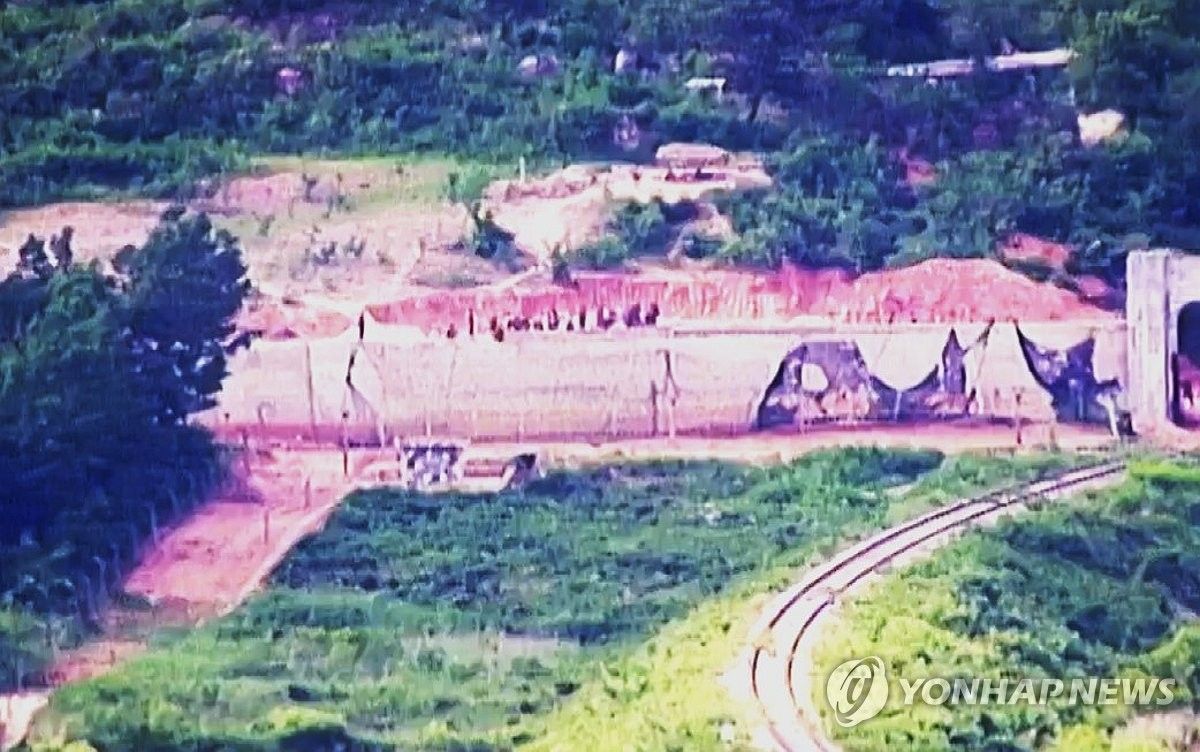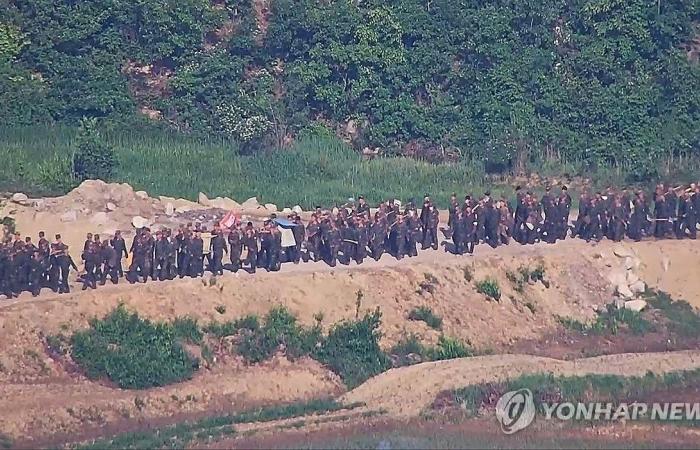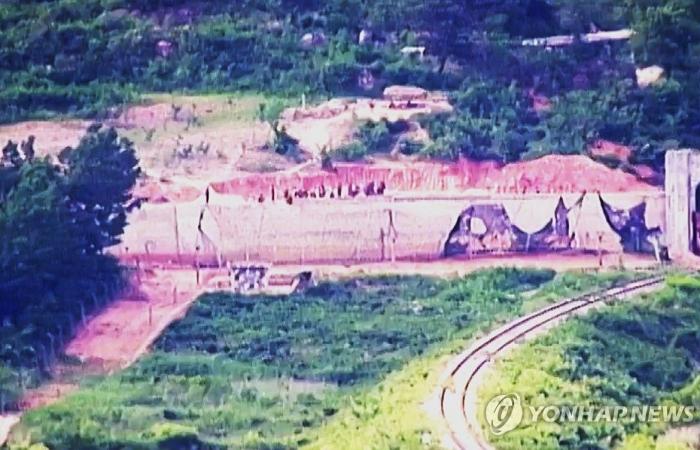(Photo provided by the JCS. Resale and archiving prohibited)
SEOUL, June 18 (Yonhap) — Seoul’s Joint Chiefs of Staff (JCS) said in a press briefing Tuesday that several cases of North Korean soldiers being killed or injured by explosions Anti-personnel mines in the Demilitarized Zone (DMZ) have been noted in recent weeks. “The North Korean army has accelerated clearing and mining work in the inter-Korean border areas since April despite a large number of deaths and injuries caused by mine explosions,” detailed the JCS.
According to South Korean military authorities, the North Korean army has mobilized between tens and hundreds of soldiers in each of the approximately 10 demarcated zones inside the DMZ to carry out weeding, mining, maintenance of tactical routes, and the establishment of what appear to be anti-tank installations on a 2 km wide strip in the northern part of the DMZ.
On November 23, 2023, North Korea canceled the application of the inter-Korean military agreement of September 19, 2018 which aimed to ease inter-Korean military tensions and had restored the outposts (GP) destroyed or left empty. Furthermore, mining work had already been carried out on the inter-Korean roads in the west (Gyeongui), east (Donghae) and center (Arrow Head). The removal of rails on inter-Korean railway lines was also carried out with the aim of implementing orders from North Korean leader Kim Jong-un aimed at erasing the idea of inter-Korean unification and henceforth considering the South as a military enemy. .
(Photo provided by the JCS. Resale and archiving prohibited)
It should be noted that the North Korean army is building concrete walls 4 to 5 meters high at the entrance to the DMZ in certain areas. South Korean authorities believe these walls are anti-tank installations. Asked whether the North was seeking to create a border line that would replace the Demarcation Line (MDL) that divides the two Koreas and which has been marked in most cases with signs installed in the center of the DMZ, the JCS said. indicated that additional analyzes and observations will be necessary.
Regarding increased North Korean activities in the DMZ, the JCS analyzed that “these movements would serve to strengthen internal control of the North Korean military and North Korean residents to prevent any possibility of defection to the South” and predicts in the days to come the extension into the DMZ of the work zone by the North Korean army. A JCS official noted that “our military closely monitors the movement of the North Korean army in the border area in order to deal with an accidental situation and maintains close collaboration with the United Nations Command.”

(Photo provided by the JCS. Resale and archiving prohibited)
(END)








